Image: Christ Crucified with with the Virgin, Saint John and Mary Magdalene, Anthony van Dyck [public domain]
Before we take a fresh look at the story of the Passover Lamb, let’s define a key word in the title of this post. What is typology? It is the study of “types” or foreshadowings of Jesus in the Bible. Specifically, it is the study of those things in the Old Testament—persons, places, things, events, etc.—that point forward to, and are fulfilled in, the mystery of Jesus Christ and the establishment of his Church.
So, for example, the Passover Lamb from the Exodus narrative is a type and foreshadowing of Jesus Christ. The Catechism of the Catholic Church points out that “after agreeing to baptize him along with the sinners, John the Baptist looked at Jesus and pointed him out as the ‘Lamb of God, who takes away the sin of the world.’ By doing so, he reveals that Jesus is at the same time the suffering Servant who silently allows himself to be led to the slaughter and who bears the sin of the multitudes, and also the Paschal Lamb, the symbol of Israel’s redemption at the first Passover” (CCC 608).
So, there are many specific ways in which the Passover lamb is a type of Jesus. A few examples open up the mystery to us nicely: the lamb was male and without blemish. Thus, Jesus is male and without blemish—that is, without sin. The lamb is slain, and its blood is smeared on the wood beams of the Israelite’s doors. Thus, Jesus is slain, and his blood is smeared on the wood beams of the cross, which is the door to eternal life. Any Israelite who wanted to ensure the salvation of the first-born son needed to eat the flesh of the lamb as a sacrificial meal. Thus, any human being who wants to ensure the salvation of his own soul must eat the flesh of the new lamb, Jesus Christ, which is given to us in the sacrificial meal of the Eucharist.
Taking all that into account, what St. John the Baptist is effectively telling his listeners then, is that just as the sacrifice of the lamb was the means by which God delivered Israel from bondage to Pharaoh in Egypt, so also the sacrifice of Jesus Christ is the means by which God delivered us from the bondage of sin to Satan in this world.
But there is another detail about the Passover typology that is often overlooked in many commentaries. God commanded that the Israelites must kill the lamb themselves and spread its blood on the door lintels (see Exodus 12:6). What does this teach us about Christ’s crucifixion? The Catechism gives us a hint: “the Church has never forgotten that ‘sinners were the authors and the ministers of all the sufferings that the divine Redeemer endured.’ Taking into account the fact that our sins affect Christ himself, the Church does not hesitate to impute to Christians the gravest responsibility for the torments inflicted upon Jesus” (CCC 598).
What this means is that this detail is fulfilled in us! We are the Israelites! Just as they killed the lamb and spilled its blood, so do we kill the new Passover Lamb, Jesus Christ by our sins. Our willful disobedience put Jesus on the cross and yet he willingly submits to the sacrifice precisely in order to save us!
I encourage you in these last days of Lent to set aside some time in prayer to reflect on the Passover typology of the Exodus and how it is fulfilled in Jesus Christ. While you do so, dial in on the fact that your sins—and mine—put Jesus on the cross. Imagine it was you who sacrificed the lamb in Egypt, spread its blood on the wood, but was then mysteriously saved by that very act from your bondage. May your Holy Week be blessed with God’s abundant mercies and consolations!

